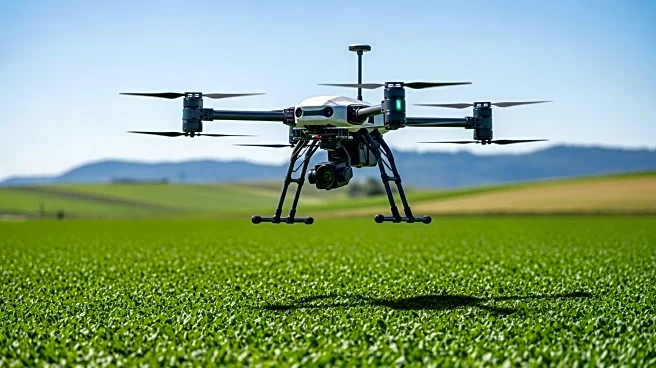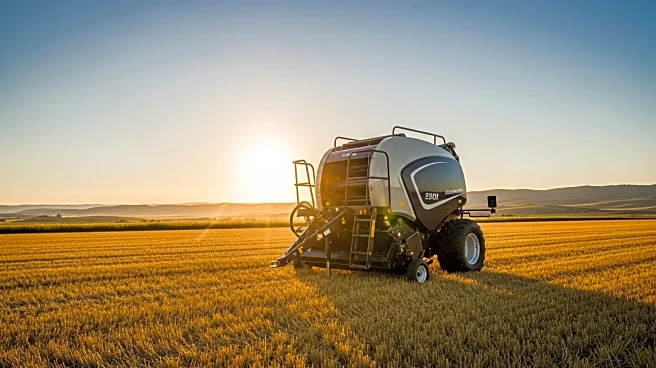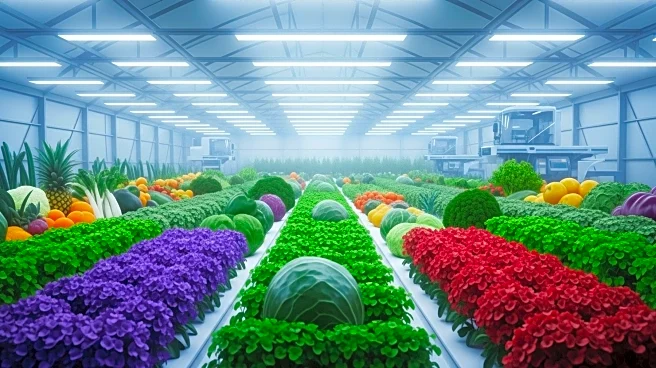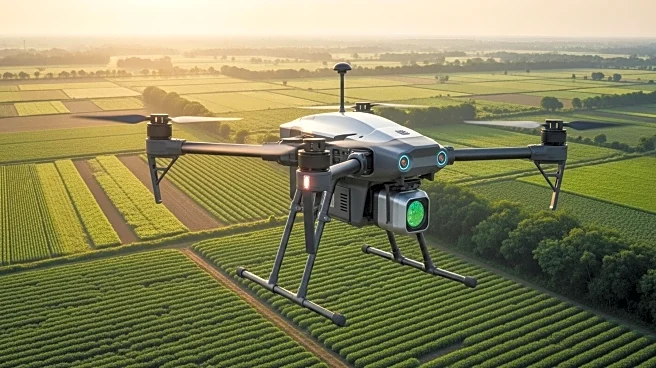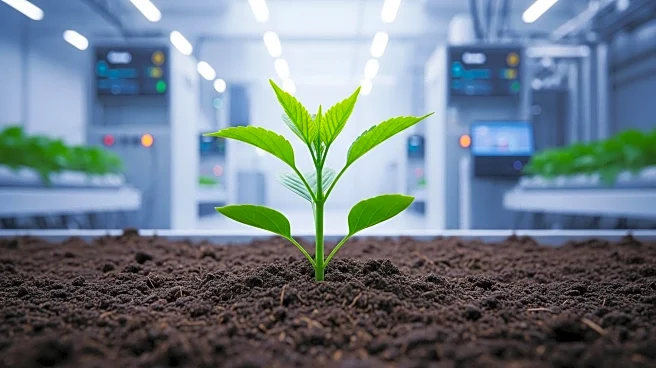What is the story about?
What's Happening?
The agriculture sector is experiencing a transformation driven by generative artificial intelligence (AI), with startups leveraging AI to address challenges such as climate change, population growth, and resource scarcity. The market for generative AI in agriculture is projected to grow significantly, from USD 269.78 million in 2025 to USD 2,012.90 million by 2034, at a compound annual growth rate (CAGR) of 25.02%. Key trends fueling this growth include precision farming, agricultural robotics, and machine learning-driven analytics. Precision farming uses real-time data from sensors, drones, and satellites to optimize resource use and maximize yields. Agricultural robotics, experiencing a rapid CAGR of 31.2%, addresses labor shortages and rising operational costs through automation. Machine learning, which accounts for 42.5% of the market share in 2024, processes vast datasets with adaptability and accuracy. North America leads the market with a 48% revenue share, while Asia and Sub-Saharan Africa are gaining traction with AI solutions tailored to smallholder farmers.
Why It's Important?
The integration of AI into agriculture is crucial for addressing global challenges such as food security and sustainable farming practices. Startups like Cradle Bio, Nexa Labs, and Solinftec are at the forefront of this revolution, offering innovative solutions that enhance productivity and sustainability. Cradle Bio's AI-driven protein engineering accelerates the development of bio-based agricultural products, while Nexa Labs uses implantable microchips for livestock management, providing early disease detection and reproductive insights. Solinftec's AI-powered automation platform optimizes field operations, and Taranis's crop monitoring reduces crop losses by up to 50%. These advancements promise significant returns on investment, with small farmholders reporting a 120% ROI and large-scale operations achieving 150% ROI. However, challenges such as high upfront costs and regulatory hurdles persist, highlighting the need for strategic investment and policy support.
What's Next?
As the generative AI market in agriculture continues to grow, investors are likely to focus on startups that demonstrate innovation, scalability, and market readiness. The sector's growth suggests a path to profitability for scalable agri-tech ventures, with the broader generative AI market projected to reach USD 220 billion by 2030. However, investors must navigate risks such as high infrastructure costs and geographic scalability challenges. Successful adoption of AI tools in regions like Sub-Saharan Africa will require overcoming financial and technical barriers. The convergence of AI and agriculture presents a strategic imperative for capital allocators, with early-stage investments expected to yield significant returns.
Beyond the Headlines
The shift towards AI-driven agriculture has ethical and cultural implications, particularly in terms of labor displacement and the adoption of technology in traditional farming communities. As AI tools become more prevalent, there is a need to balance technological advancement with the preservation of local farming practices and community livelihoods. Additionally, the regulatory landscape for AI in agriculture will play a critical role in shaping the industry's future, requiring collaboration between policymakers, industry leaders, and civil society to ensure sustainable and equitable growth.
AI Generated Content
Do you find this article useful?
